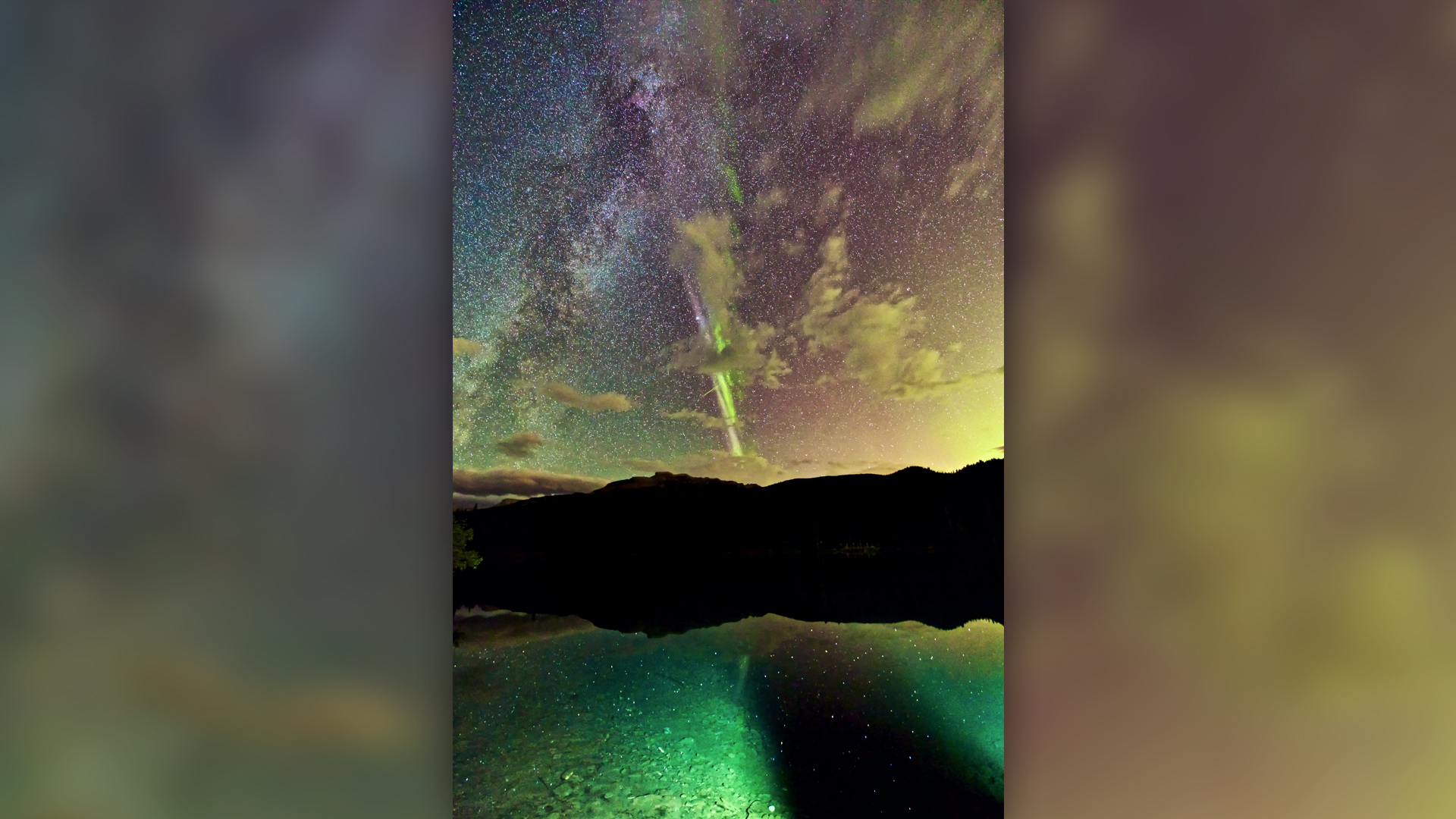Inside Story Behind Mesmerizing Sky Glow Named 'Steve' Revealed in New Documentary
Steve is like an aurora, but it's also something completely unique.

SAN FRANCISCO — An oddball sky glow endearingly named "Steve" captivated aurora chasers from the moment they first spotted and photographed the unique light display over Canada in 2016.
Steve somewhat resembled an aurora, but its sky-climbing ribbons and ladders of purple and green light were distinctly different in shape and behavior from those produced by a typical aurora.
Since then, Steve has intrigued not only hobbyist skygazers but also astronomers from NASA — and filmmakers, too. "Chasing Steve," a new documentary that was screened Dec. 9 at the annual meeting of the American Geophysical Union (AGU), highlights the efforts of citizen scientists and researchers alike, as they race to capture Steve's unearthly beauty and define the electromagnetic forces that shape it.
"We were so taken with this really great story," said Leah Mallen, who co-produced and co-directed the film with Jess Fraser. "This advancement of digital photography really allowed for new types of aurora photography to be introduced. People had longer exposures, higher resolution; people who were hobbyists were taking things to a new level," Mallen told Live Science.
Related: Aurora Photos: Northern Lights Dazzle in Night-Sky Images
Auroras — and Steve — occur because the sun spews "a glitter bomb of charged particles" that stream 93 million miles (150 million kilometers) toward Earth, NASA Goddard Space Flight Center researcher Elizabeth MacDonald said in the film. Once those particles reach our planet, they interact with the upper atmosphere to produce spectacular light displays that shimmer against the backdrop of the night sky,
Members of the Alberta Aurora Chasers group share a deep-seated dedication to preserving those light shows in their photography, despite the lost sleep and hours of late-night waiting, often in vain, to capture one, perfect photo, Mallen said. After several photographers spotted a display unlike any aurora they'd seen before — a prominent vertical streak, rather than a horizontal wave — they started calling it "Steve," a nod to the film "Over the Hedge" (DreamWorks Animation, 2006), in which talking animals randomly give that name to an object that they've never seen before (a hedge).
Sign up for the Live Science daily newsletter now
Get the world’s most fascinating discoveries delivered straight to your inbox.
When astronomers saw these photographs, they realized that they'd seen Steve, too, but had mistakenly categorized it as just another aurora, Eric Donovan, a professor of physics and astronomy at the University of Calgary, said at the AGU screening. From the photographic evidence, they realized that Steve consistently behaved very differently than other auroras did.
What's more, Steve appears in a different sky region than most auroras do, so most of the astronomical equipment dedicated to aurora observation is looking in the wrong place to see Steve, Donovan said.
Now, Steve has acquired an official scientific "backronym" — Solar Thermal Emission Velocity Enhancement. In other words, "Steve" is also "STEVE." Researchers recently pinpointed the cause of Steve's unusual light as the interaction of hot plasma winds, magnetic waves and electron showers in sky regions where they don't normally appear.
There is still much to unravel about what causes the conditions that shape Steve, but the recent discoveries were only possible due to the combined efforts and communication between researchers and citizen scientists like the aurora chasers, Donovan told the audience at AGU.

Not a newcomer
Steve has risen to prominence in the news within the past few years, but it's been around for far longer, according to research compiled by Michael Hunnekuhl, a German aurora historian and enthusiast, and presented at AGU by MacDonald. Hunnekuhl pored over scores of descriptions of observations, looking for mentioned features unlike those seen in typical aurora displays, MacDonald told Live Science.
"Steve is quite characteristic. Unlike other auroras, it aligns east to west, often straight overhead," she said. Hunnekuhl also noted that reports of unusual glows were from sky regions where main aurora activity wasn't usually found; that they were often whitish but could be purple during "intense events"; and that they drifted from east to west "like wind-driven smoke."
From these and other criteria, he identified more than 100 likely candidates for Steve sightings between 1706 and 1958. His picks include several sightings described in scientific literature by Norwegian auroral pioneer Carl Størmer in the 1930s and 1940s, who called the lights "feeble homogenous arcs of great altitude" (a fine name, though certainly not as catchy as "Steve").
"There's a large body of auroral research going back to when people didn't even know what an aurora was," MacDonald said. "There is a real benefit in the scientists and the public realizing that this has actually been reported in the scientific literature of the past two centuries."
"Chasing Steve" is currently available to view in Canada on Vimeo, and it will soon be available to rent or purchase in the U.S. via the film's website, Mallen said.
- 25 Strangest Sights on Google Earth
- Aurora Photos: Northern Lights Dazzle in Night-Sky Images
- Spooky! Top 10 Unexplained Phenomena
Originally published on Live Science.


Mindy Weisberger is an editor at Scholastic and a former Live Science channel editor and senior writer. She has reported on general science, covering climate change, paleontology, biology and space. Mindy studied film at Columbia University; prior to Live Science she produced, wrote and directed media for the American Museum of Natural History in New York City. Her videos about dinosaurs, astrophysics, biodiversity and evolution appear in museums and science centers worldwide, earning awards such as the CINE Golden Eagle and the Communicator Award of Excellence. Her writing has also appeared in Scientific American, The Washington Post and How It Works Magazine. Her book "Rise of the Zombie Bugs: The Surprising Science of Parasitic Mind Control" will be published in spring 2025 by Johns Hopkins University Press.










